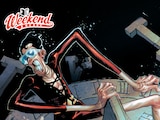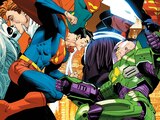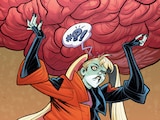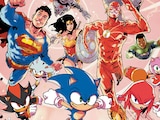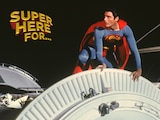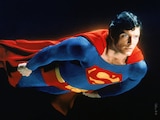Last week we were saddened to hear about the passing of Neal Adams, a legendary artist who helped reshape comic book storytelling. While it’s only natural to grieve for the visionary we lost, we should also celebrate all that he gave us—and there was much, both on the comics page and off. Neal Adams was an artist unlike any other, and his legacy will be celebrated for generations to come.
Adams began illustrating for DC in 1967, and he quickly reinvigorated the medium like a bolt of lightning. During his time on Batman and Detective Comics, Adams helped push the Dark Knight to new heights.

To truly understand how revolutionary Adams’ art was, it helps to take a look at how Batman was drawn in the comics prior to his arrival. Influenced by the hit Adam West TV show, the Gotham of the 1960s was a city of bright colors and high camp, but Adams recognized that it was time for Batman and his world to grow and evolve. In fact, in many ways the arrival of Adams to DC Comics can be seen as the end of the Silver Age and the dawn of the Bronze Age. Among many other things, Adams redesigned Batman’s cowl, changing the placement and size of the ears. To this day, his Batman cowl is considered the gold standard.
Working alongside writer Denny O’Neil, Adams helped produce some of the most iconic Batman stories of the Bronze Age, including the introductions of Ra’s al Ghul and Man-Bat. Adams also helped the character of Deadman soar to new heights, as his mean, moody and magnificent illustrations captured the imaginations of readers. When you look at Adams' early Deadman stories in Strange Adventures, it’s easy to see how he became an industry superstar.

We can’t talk about Neal Adams without bringing up the “Hard Traveling Heroes” storyline in Green Lantern/Green Arrow. Before the run began, Adams had already begun reinventing Oliver Queen in The Brave and the Bold #85, giving the Emerald Archer a new look and drawing him with his now-signature goatee for the first time. The stakes were raised even further in Green Lantern/Green Arrow #76 where Adams collaborated with O’Neil for the beginning of a new run of socially conscious stories that elevated the maturity of the entire comic book medium. During this run, Adams co-created John Stewart, DC’s first African-American superhero.
“Hard Traveling Heroes” teamed Green Arrow and Green Lantern up as they traveled the country and clashed over their dueling ideologies. The storyline dealt with systemic racism, drug addiction, the justice system and more. It’s hard to imagine anyone but Adams collaborating with O’Neil on this seminal run. Look at the framing of the sequence where an African-American man confronts Hal Jordan in Green Lantern/Green Arrow #76, or the iconic cover to Green Lantern/Green Arrow #85 where readers learn Roy Harper has become a drug addict. These illustrations have so much depth, nuance and emotion. Adams wasn’t just some artist brought in to illustrate O’Neil’s scripts—he was a true collaborator. Calling Adams a penciller is an oversimplification, he was a storyteller, and a master one at that.

He was also a hero. Thanks in part to Adams’ activism, Superman’s creators Jerry Siegel and Joe Shuster were able to receive proper credit and a yearly pension for creating the Man of Steel. Adams never stopped advocating for other creators and continually challenged the comic book industry to rethink the way storytellers were treated. For years, it was standard practice for the publisher to keep a penciler’s original artwork. Thanks to Adams’ activism, that has changed and it’s now the industry standard for artists to keep their original artwork. When it comes to creators’ rights, the comic book industry of today is a much different and better place than the one of fifty years ago and Neal Adams is a huge part of that.
Although Adams’ time with us is done, he’s left behind a legacy that will continue to shape DC and the comic book industry. Every time you see Ra’s al Ghul in a Batman movie or TV series, that’s Neal Adams’ work brought to life. Every time you see Green Arrow with his iconic goatee, that’s Adams as well. Every time you read a comic with John Stewart, you can thank Adams. Every time original artwork is returned to a penciler, that’s Adams’ long legacy living on.

Neal Adams changed the DNA of the DC Universe and every day we see examples of it, sometimes without even realizing it. Adams was talented, driven and compassionate, and he would have excelled in any field he chose to work in. We’re very lucky he chose to be an artist. The DC Universe is a better place for it, and so is the industry as a whole.
Jim Lee, Paul Levitz, Frank Miller, Denys Cowan, Jenette Kahn and more remember the life and work of Neal Adams.
Joshua Lapin-Bertone writes about TV, movies and comics for DCComics.com and writes our monthly Batman column, "Gotham Gazette." Follow him on Twitter at @TBUJosh.

